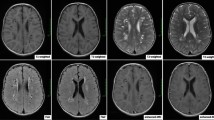Abstract
Background
Oculocerebrorenal (Lowe) syndrome is an X-linked multisystem disease characterized by renal proximal tubulopathy, mental retardation, and congenital cataracts. We present a 19-year-old boy who was found to have low molecular weight proteinuria, hypercalciuria, mild generalized hyperaminoaciduria and intermittent microscopic hematuria at the age of 3.
Methods
Standard clinical and biochemical examinations and mutational analysis of the CLNC5 and OCRL1 gene were performed for the patient.
Results
The patient fulfilled diagnostic criteria for Dent disease, but lacked mutation in CLCN5. Sequencing of candidate genes revealed a mutation in his OCRL1 gene, which encodes for enzyme PIP2 5-phosphatase. The enzyme was not detected by western blot analysis, and decreased activity of the enzyme PIP2 5-phosphatase was observed in cultured skin fibroblasts. The boy had only mild mental retardation, mildly elevated muscle enzymes, but no neurological deficit or congenital cataracts, which are typical for Lowe syndrome.
Conclusions
Children with Dent phenotype who lack CLCN5 mutation should be tested for OCRL1 mutation. OCRL1 mutations may present with mild clinical features and are not necessarily associated with congenital cataracts.
Similar content being viewed by others
References
Scheinman SJ, Thakker RV. X-linked nephrolithiasis/Dent’s disease and mutations in the ClC-5 chloride channel. In: Econs MJ, eds. Genetic aspects of osteoporosis and metabolic bone disease. Totowa, NJ: Humana Press, 2000: 133–152.
Scheinman SJ, Pook MA, Wooding C, Pang JT, Frymoyer PA, Thakker RV. Mapping the gene causing X-linked recessive nephrolithiasis to Xp11.22 by linkage studies. J Clin Invest 1993;91:2351–2357.
Hoopes RR Jr, Shrimpton AE, Knohl SJ, Hueber P, Hoppe B, Matyus J, et al. Dent Disease with mutations in OCRL1. Am J Hum Genet 2005;76:260–267.
Utsch B, Bökenkamp A, Benz MR, Besbas N, Dötsch J, Franke I, et al. Novel OCRL1 mutations in patients with the phenotype of Dent disease. Am J Kidney Dis 2006;48:942.e1–14.
Cho HY, Lee BH, Choi HJ, Ha IS, Choi Y, Cheong HI. Renal manifestations of Dent disease and Lowe syndrome. Pediatr Nephrol 2008;23:243–249.
Sekine T, Nozu K, Iyengar R, Fu XJ, Matsuo M, Tanaka R, et al. OCRL1 mutations in patients with Dent disease phenotype in Japan. Pediatr Nephrol 2007;22:975–980.
Shrimpton AE, Hoopes RR Jr, Knohl SJ, Hueber P, Reed AA, Christie PT, et al. OCRL1 mutations in Dent 2 patients suggest a mechanism for phenotypic variability. Nephron Physiol 2009; 112:27–36.
Hoopes RR Jr, Raja KM, Koich A, Hueber P, Reid R, Knohl SJ, et al. Evidence for genetic heterogeneity in Dent’s disease. Kidney Int 2004;65:1615–1620.
Lowe CU, Terrey M, Maclachlan EA. Organic aciduria, decreased renal ammonia production, hydrophthalmos, and mental retardation: a clinical entity. Am J Dis Child 1952;83: 164–184.
Gropman A, Levin S, Yao L, Lin T, Suchy S, Sabnis S, et al. Unusual renal features of Lowe syndrome in a mildly affected boy. Am J Med Genet 2000;95:461–466.
Röschinger W, Muntau AC, Rudolph G, Roscher AA, Kammerer S. Carrier assessment in families with Lowe oculocerebrorenal syndrome: novel mutations in the OCRL1 gene and correlation of direct DNA diagnosis with ocular examination. Mol Genet Metab 2000;69:213–222.
Kruger SJ, Wilson ME Jr, Hutchinson AK, Peterseim MM, Bartholomew LR, Saunders RA. Cataracts and glaucoma in patients with oculocerebrorenal syndrome. Arch Ophthalmol 2003;121:1234–1237.
Charnas LR, Bernardini I, Rader D, Hoeg JM, Gahl WA. Clinical and laboratory findings in the oculocerebrorenal syndrome of Lowe, with special reference to growth and renal function. N Engl J Med 1991;324:1318–1325.
Schramm L, Gal A, Zimmermann J, Netzer KO, Heidbreder E, Lopau K, et al. Advanced renal insufficiency in a 34-year-old man with Lowe syndrome. Am J Kidney Dis 2004;43:538–543.
Tricot L, Yahiaoui Y, Teixeira L, Benabdallah L, Rothschild E, Juquel JP, et al. End-stage renal failure in Lowe syndrome. Nephrol Dial Transplant 2003;18:1923–1925.
Addis M, Loi M, Lepiani C, Cau M, Melis MA. OCRL mutation analysis in Italian patients with Lowe syndrome. Hum Mutat 2004;23:524–525.
Monnier N, Satre V, Lerouge E, Berthoin F, Lunardi J. OCRL1 mutation analysis in French Lowe syndrome patients: implications for molecular diagnosis strategy and genetic counseling. Hum Mutat 2000;16:157–165.
Lin T, Orrison BM, Leahey AM, Suchy SF, Bernard DJ, Lewis RA, et al. Spectrum of mutations in the OCRL1 gene in the Lowe oculocerebrorenal syndrome. Am J Hum Genet 1997;60: 1384–1388.
Bökenkamp A, Böckenhauer D, Cheong HI, Hoppe B, Tasic V, Unwin R, et al. Dent-2 Disease: a mild variant of Lowe syndrome. J Pediatr 2009;155:94–99.
Tosetto E, Addis M, Caridi G, Meloni C, Emma F, Vergine G, et al. Locus heterogeneity of Dent’s disease: OCRL1 and TMEM27 genes in patients with no CLCN5 mutations. Pediatr Nephrol 2009;24:1967–1973.
Jänne PA, Suchy SF, Bernard D, MacDonald M, Crawley J, Grinberg A, et al. Functional overlap between murine Inpp5b and Ocrl1 may explain why deficiency of the murine ortholog for OCRL1 does not cause Lowe syndrome in mice. J Clin Invest 1998;101:2042–2053.
Author information
Authors and Affiliations
Corresponding author
Additional information
This paper was presented on the Annual Meeting of the European Society for Pediatric Nephrology, Istanbul, Turkey, September 10–13, 2005.
Rights and permissions
About this article
Cite this article
Lozanovski, V.J., Ristoska-Bojkovska, N., Korneti, P. et al. OCRL1 mutation in a boy with Dent disease, mild mental retardation, but without cataracts. World J Pediatr 7, 280–283 (2011). https://doi.org/10.1007/s12519-011-0312-6
Received:
Accepted:
Published:
Issue Date:
DOI: https://doi.org/10.1007/s12519-011-0312-6




